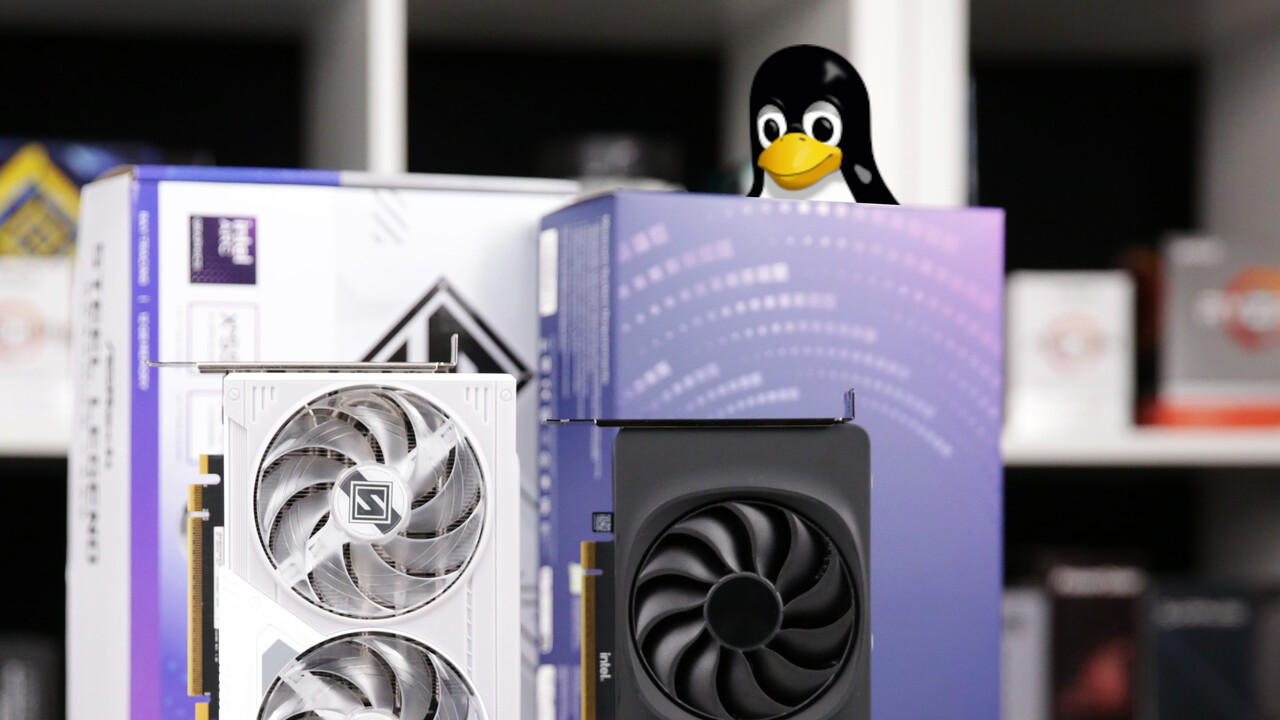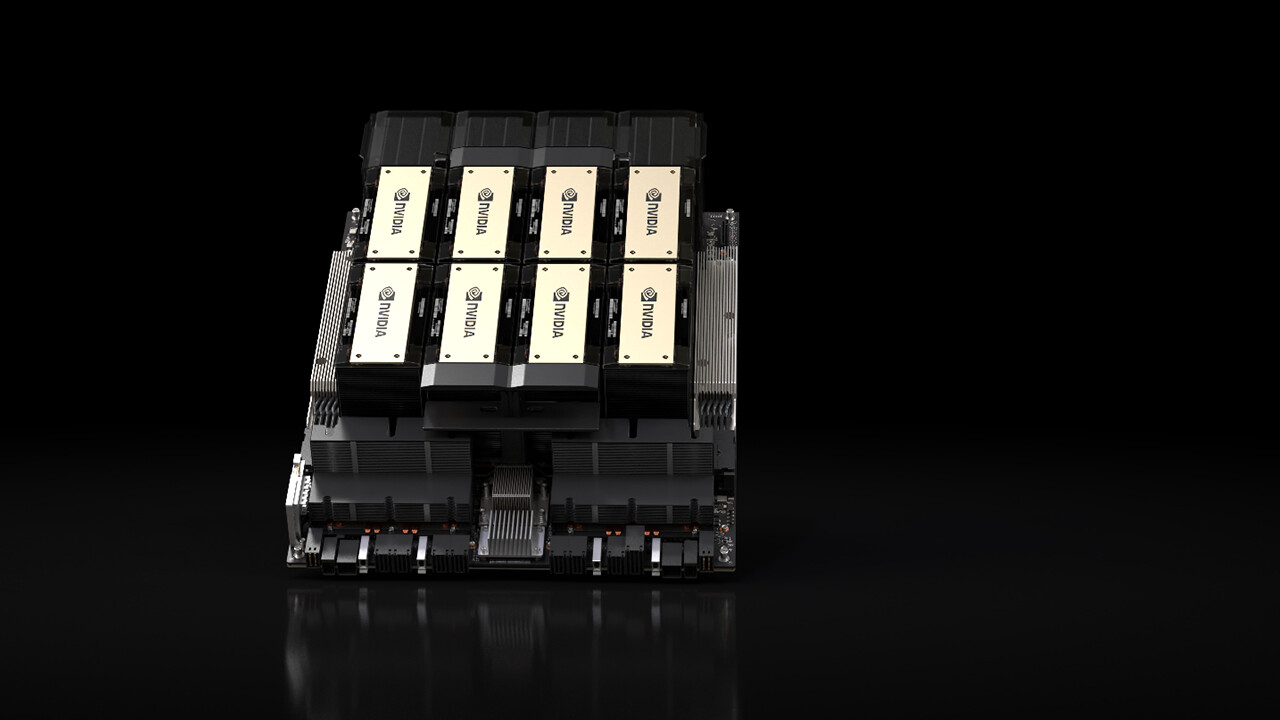FSR Redstone: AMD with upgrades for FSR 4 (.1?) on rDNA 4 after 187 comments

With the start of FSR 4 (test), AMDS sampling took a huge step forward. But that should have only been the beginning. AMD has promised several improvements on calculx under the name “FSR Redstone”, which should appear in the second half of the year.
There aren’t many details yet, but one thing is becoming clear: with FSR 4, AMD wanted to improve FSR 3.1’s biggest construction site, the super-resolution algorithm, and with FSR Redstone there is now a big update ahead of “global FSR”. However, this does not mean that the super-resolution algorithm is no longer modified. At Redstone, AMD is talking about an “enhanced ML-SR model” that is optimized primarily for small resolutions. You want to incorporate the things you’ve learned in Redstone since the start of FSR 4.
There are also two new features for Redstone, whereby they have one thing in common: both focus on improving image quality and ray tracing performance, which applies to full ray tracing, but probably also for normal ray tracing.
Neural Radiation Cache
With “neural radiation caching,” the FSR algorithm learns to shift ray bounces so it can better represent indirect light. This potentially allows for more accurate lighting at the same time. This is a scenario that likely only occurs in ray tracing games. Additionally, NRC is a feature NVIDIA recently demonstrated in action for DLSS 4. It’s the first neural shader. Given that AMD’s neural radiation caching also works with machine learning, it’s conceivable that the Radeon variant will also feature a neural shader.
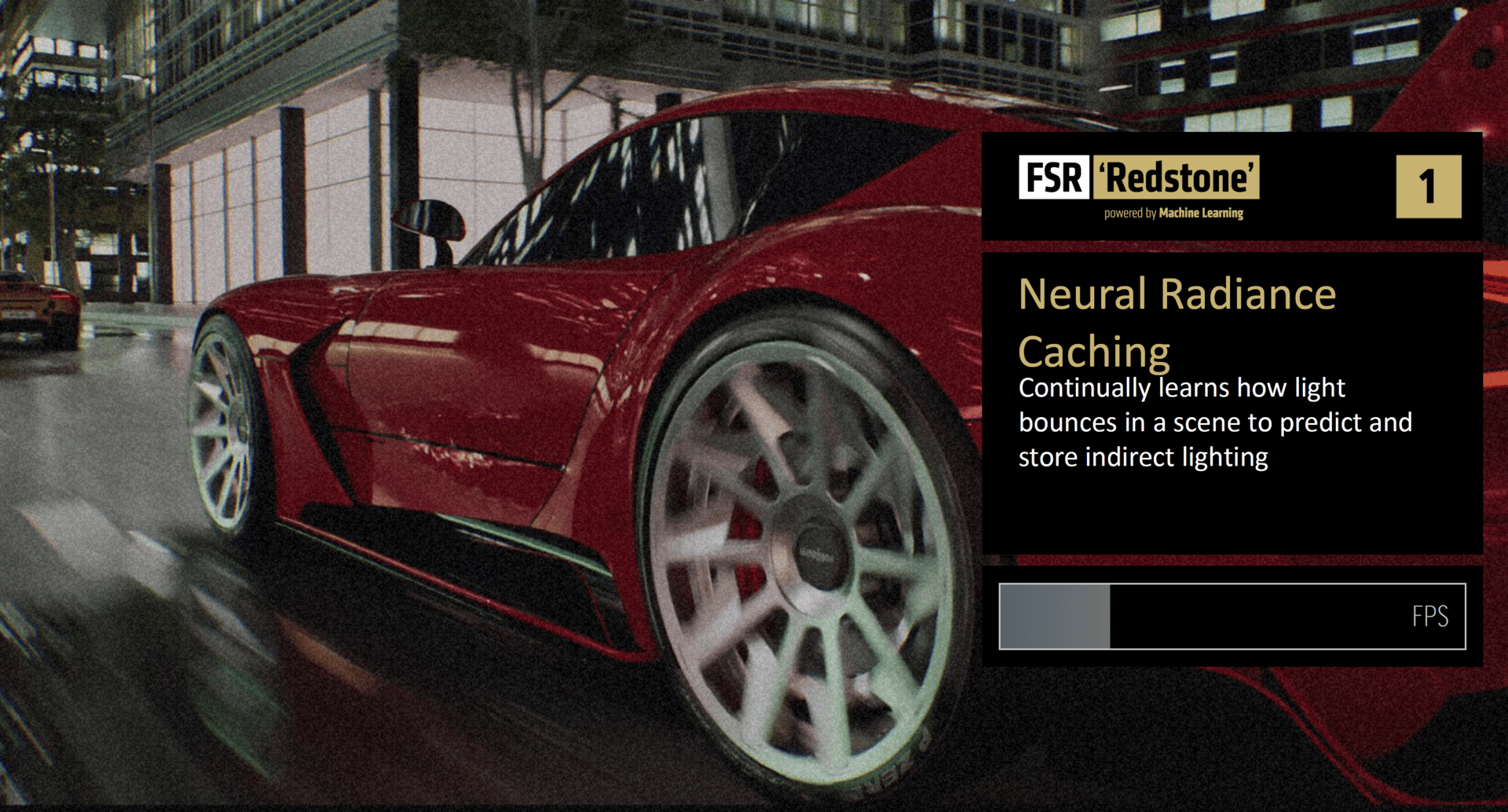 AMD FSR Redstone Announced (Photo: AMD)
AMD FSR Redstone Announced (Photo: AMD)
Ray Regeneration
For Redstone, ray reconstruction, known from NVIDIA DLSS, is now known under the similar name Ray Regeneration. Ray Regeneration uses a newly trained network to restore pixels that couldn’t be accurately calculated using ray tracing. In a brief description, AMD only mentions full ray tracing as an application area; experience has shown that ray tracing should also be able to provide guidance in normal ray tracing games.
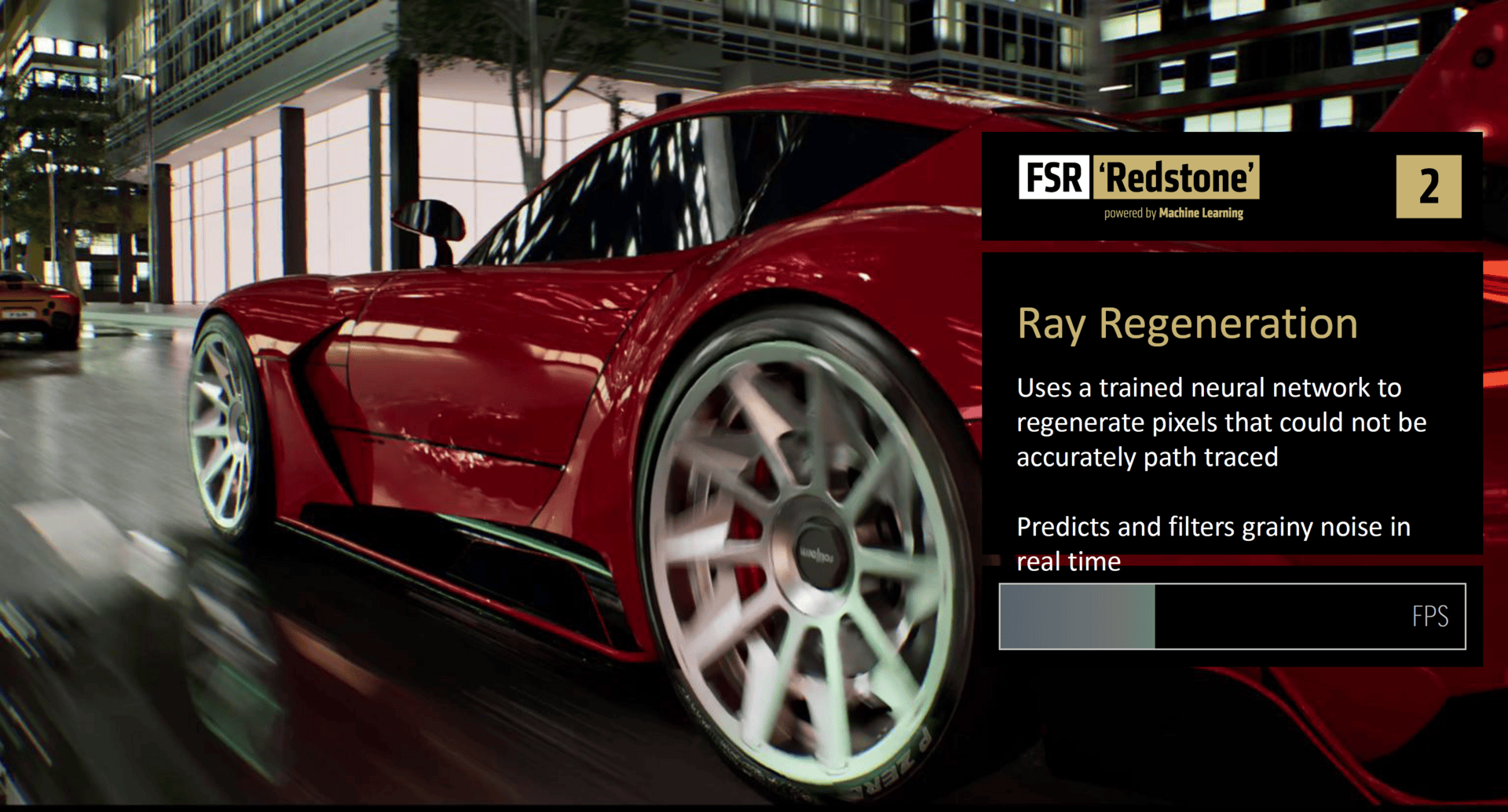 AMD FSR Redstone Announced (Photo: AMD)
AMD FSR Redstone Announced (Photo: AMD)
A New Frame Generation – with AI
FSR 4 uses the frame generation algorithm from FSR 3.1, now used for Redstone. Artificial frames will also be created in the future using machine learning, which AMD says should result in better image quality because the AI model, unlike the classic algorithm, understands the image and the scene and can better reconstruct pixels. AMD doesn’t mention multi-frame generation, so it’s conceivable that it will stick with normal frame generation (2x).
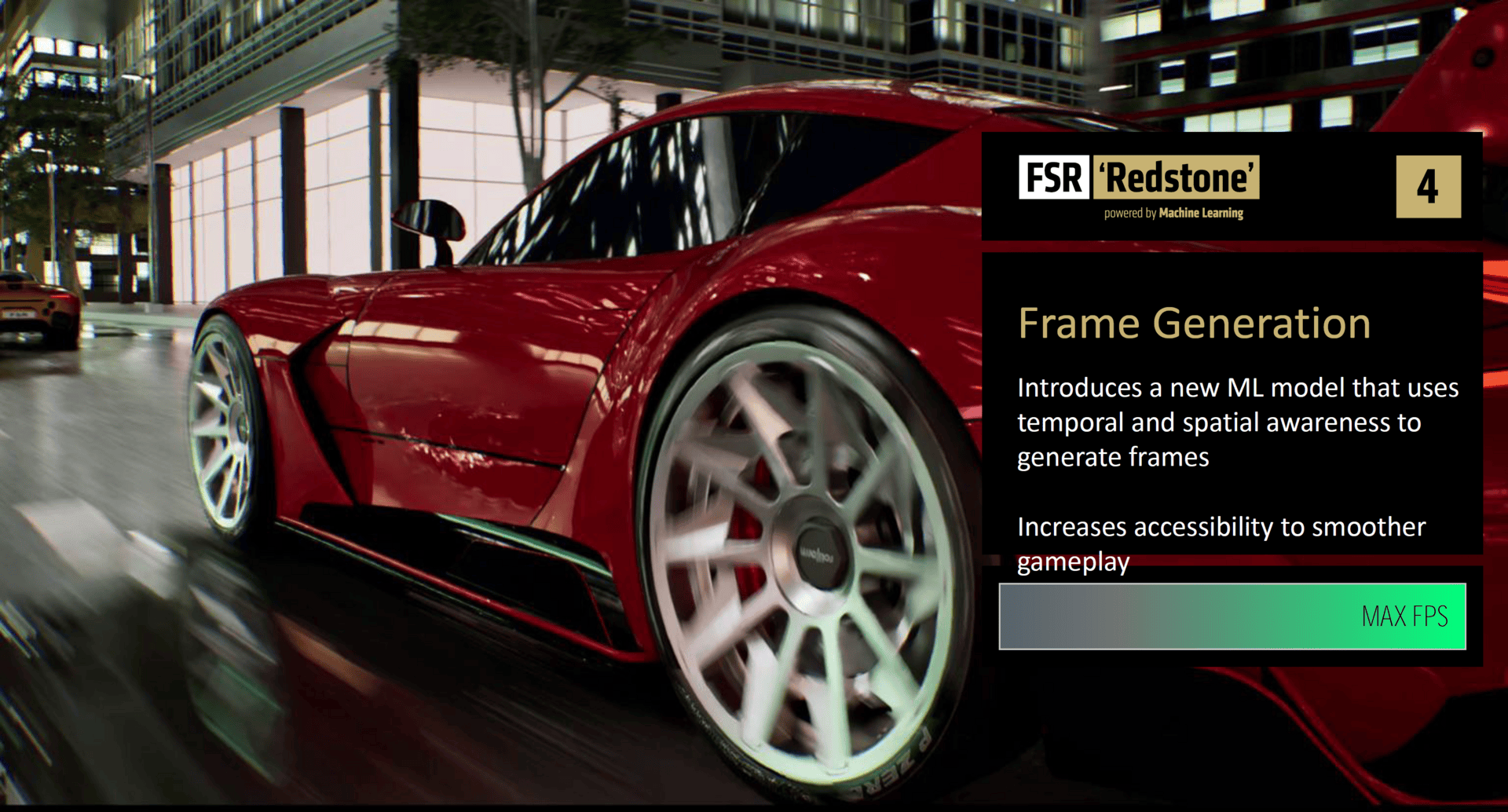 AMD FSR Redstone announced (photo: AMD)
AMD FSR Redstone announced (photo: AMD)
In the second half exclusively for rDNA 4
Because Redstone will be released in the second half of the year, and AMD does not call a more specific period. The name is not yet clear, as FSR Redstone is a project name. FSR 4.1 is conceivable and corresponded to the classic name scheme, but due to the extensive changes, for example, FSR 4.5 is also conceivable.
For Redstone, like FSR 4, will only work on the new RDNA 4 architecture and therefore the Radeon RX 9070 XT, Radeon RX 9070 and Radeon RX 9060 XT. Given that all of the new features that use the revised frame generation and super resolution use a neural network, this is not surprising. Dna 4 is much more powerful in terms of AI than rdna 3. AMD has thus made the complete change from classic algorithms to AI models from FSR 3.1 to Redstone.
Techtip received the information about this article from AMD on Computex 2025 in Taipei, Taiwan under NDA. There was no influence from the manufacturers nor a duty to report. The only requirement was the earliest possible release time.
Topics: AMD Computex 2025 Radeon RDNA 4 RX 9060 XT RX 9070 RX 9070 XT Graphics Cards

An engineer by training, Alexandre shares his knowledge on GPU performance for gaming and creation.
